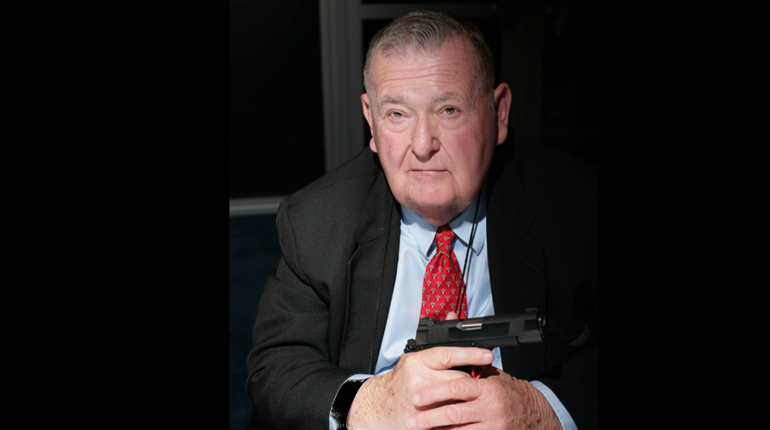
One of the earliest automatic pistols enjoyed a pretty healthy service life. Mauser's exotic C96 is often called the Broomhandle because of the distinctively shape of the butt. It is a very strong, recoil-operated auto that is laid out a lot differently that most other autos. The integral box magazine is forward of the trigger guard, so the butt doesn't have to be shaped to accept a detachable magazine. On most C96s, the shooter uses stripper clips to load an integral magazine well. The magazine follower and spring are a part of the gun, not the magazine. This is not true of the Schnellfurer (full-auto) version made in the 1930s, which has a detachable magazine. Made in many variations, the Mauser-made broomhandle was produced until 1937.
Not long after the broomhandle was introduced, the Browning style of pistol was developed and proved to be a lot easier to shoot, carry and handle. In short order, it was the Browning shape that was imitated and not the Mauser. Still, versions of the C96 were made in both Spain (at Astra) and China (Shansi arsenal). Some of the Chinese guns were chambered for the .45 ACP cartridge. Most C96s were chambered for the .30 Mauser cartridge, with a considerable number of the “Red 9” type made during World War I in 9 mm Luger. There was also an early commercial cartridge for sportsmen known as the 9 mm Mauser. Comparison of dimensions and ballistics suggests that this stretched 9 mm Luger had an uncanny resemblance to the 1990s vintage 9x23 mm Winchester. Even single specimens of the 9 mm Mauser cartridge are rare.
Clearly, the C96 was an adaptable platform for anyone interested in a powerful, but rather large holster pistol. Outside of German military service, Mauser's best market for the gun was China, where various government agencies bought the pistol in quantities that totaled more than a million units. Indeed, many of today's American shooters would not have a chance to shoot the old Mauser had it not been for the quantities of the guns imported from China in the 1990s. Many of these were junk pieces that were rebuilt in American shops. Some of them were the full-autos—rebuilt as semi-autos—and had the popular detachable magazine.
I had a couple of these guns in the 90s and shot them a good bit. In the interests of determining the gun's accuracy potential, I conned Chuck Ransom into making me a set of grip inserts for the Ransom Rest. Accuracy proved to excellent with one of the rebuilds in 9 mm Luger. That prompted me to borrow an original gun in .30 Mauser, which produced a 20-shot, 25-yard group that measured just over an inch. That was a spectacular day at the range, because the guy who had the C96 also had a 1920 Luger carbine. We also shot that classic in the Ransom Rest and got similar results. As much as we might want to think of the C96 as an antique, it still makes a pretty good bunny-buster.





































